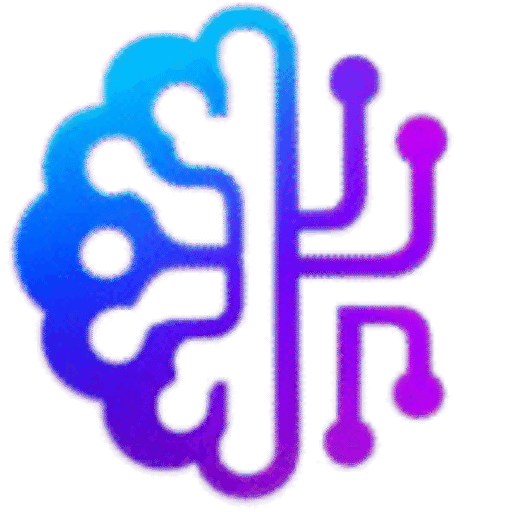Best AI Tools for Government Product Designers in 2025
Introduction
Government design is often complex, large-scale, and high-impact. Unlike private sector product design, government product designers focus on accessibility, inclusivity, and compliance while ensuring efficiency and trust for citizens.
In 2025, Artificial Intelligence (AI) is reshaping this landscape. From automating repetitive tasks to generating design guidelines, AI tools now play a crucial role in helping government product designers save time, reduce errors, and deliver better citizen-centric services.
In this blog, we’ll explore the best AI tools for government product designers, understand their benefits, use cases, and provide a step-by-step guide on how to implement them in public service design.
Why Government Designers Need AI
- Scale of design projects: Governments often deal with nationwide applications like portals, healthcare apps, and tax filing platforms.
- Strict regulations: Accessibility standards (WCAG), security, and compliance must always be met.
- Diversity of users: Government products serve people from multiple backgrounds, languages, and digital literacy levels.
- Resource constraints: Government teams often work with limited budgets and staff.
AI helps automate documentation, generate inclusive designs, and analyze user behavior for continuous improvement.
Key Features to Look for in AI Tools for Government Product Designers
When choosing AI tools for government use, designers should focus on:
- Accessibility support (auto-checking WCAG compliance)
- Multilingual design assistance
- Data security & compliance features
- Scalable design system management
- Integration with Figma, Adobe XD, or Sketch
Top AI Tools for Government Product Designers
1. Zeroheight – Best for Accessible Style Guides
- Live design documentation synced with Figma/Sketch
- AI extracts reusable components
- Accessibility checks for public platforms
- Custom branding for government websites
Use Case: Government teams can create centralized style guides, ensuring accessibility and brand compliance across multiple agencies.
2. Supernova—Best for Large-Scale Design Systems
- Automates design-to-code workflows
- GitHub/GitLab integration
- AI-based token management
- Ensures consistent design across multiple government portals
Use Case: Large projects like e-governance apps and digital tax filing systems.
3. Figma AI Plugins – Best for Daily Design Enhancements
- Design Lint: detects inconsistencies
- Magician: AI-generated icons & text
- Diagram: auto-layout suggestions
Use Case: Perfect for government UI designers ensuring pixel-perfect, accessible screens.
4. Uizard – Best for Prototyping Citizen Portals Quickly
- Text-to-UI generator
- Converts wireframes into digital prototypes
- Real-time collaboration
Use Case: Speeding up prototype development for citizen feedback before launching government apps.
5. Colormind—Best for Color Palette Generation
- AI-generated accessible color schemes
- Extracts palettes from uploaded images
- Ensures WCAG color contrast compliance
Use Case: Designing inclusive websites for government healthcare and education platforms.
6. Locofy.ai – Best for Design-to-Code Conversion
- Converts Figma designs into React/Next.js/Flutter
- AI detects reusable components
- Ensures responsiveness across devices
Use Case: Perfect for public-facing services where accessibility across devices is mandatory.
7. Galileo AI – Best for Text-to-UI Generation
- Converts natural language into UI layouts
- Learns your organization’s brand rules
- Helps generate quick prototypes
Use Case: Designing new citizen apps with minimum manual effort.
Benefits of AI for Government Product Designers
- Faster Prototyping—Citizen-facing apps can be launched more quickly.
- Better Accessibility—AI ensures WCAG compliance.
- Enhanced Collaboration—Developers, policymakers, and designers stay aligned.
- Cost Reduction—Reduces the need for large design teams.
- Improved Citizen Experience—Consistent and easy-to-use government services.
Case Studies
Case Study 1: AI in Government Healthcare Portal
A national healthcare website used Zeroheight + Figma plugins to create a unified style guide. Result: 40% faster updates and WCAG accessibility compliance.
Case Study 2: Tax Filing Application
A government tax app used Locofy.ai to convert Figma designs into responsive code. Result: Reduced front-end workload by 60%.
Case Study 3: Smart City Citizen Feedback Platform
Using Uizard + Galileo AI, the design team prototyped a multilingual citizen feedback system in 3 days instead of weeks.
How to Choose the Right AI Tool for Your Government Project
- Small teams → Start with Figma AI plugins
- Large-scale national projects → Supernova + Zeroheight
- Accessibility focus → Colormind + Design Lint
- Fast citizen prototyping → Uizard + Galileo AI
Implementation Guide
- Define the design goals—accessibility? Speed? Multilingual support?
- Choose tools accordingly—not every AI tool fits government use.
- Run pilot testing—start small with prototypes.
- Train teams—Ensure designers understand AI-generated suggestions.
- Scale gradually—expand to multiple departments.
FAQs
1. What is the best AI tool for government product designers?
Zeroheight, Supernova, and Figma AI plugins are among the best AI tools for government product designers.
2. Can AI tools ensure accessibility compliance?
Yes, tools like Colormind and Design Lint automatically check for WCAG standards.
3. Are AI design tools secure for government projects?
Most tools integrate with secure environments, but government teams must always verify compliance.
4. Do AI tools replace designers?
No, they assist by automating repetitive work while designers focus on creativity.
5. How do AI tools save time in government design projects?
They auto-generate components, ensure consistency, and reduce manual work.
Conclusion
Government product design demands accessibility, inclusivity, and consistency. With the rise of AI tools like Zeroheight, Supernova, Uizard, Figma AI plugins, and Colormind, government teams can now design faster, cheaper, and more effectively while ensuring citizen satisfaction.
By choosing the best AI tools for government product designers, teams can optimize workflows, deliver impactful services, and build public trust.
Interlinking Section
You may also like these blogs:
- How to Use AI for Predictive User Flows
- How to Automate Asset Generation with AI
- How AI Helps in Microinteraction Design
- How to Use AI for Competitor Design Analysis





